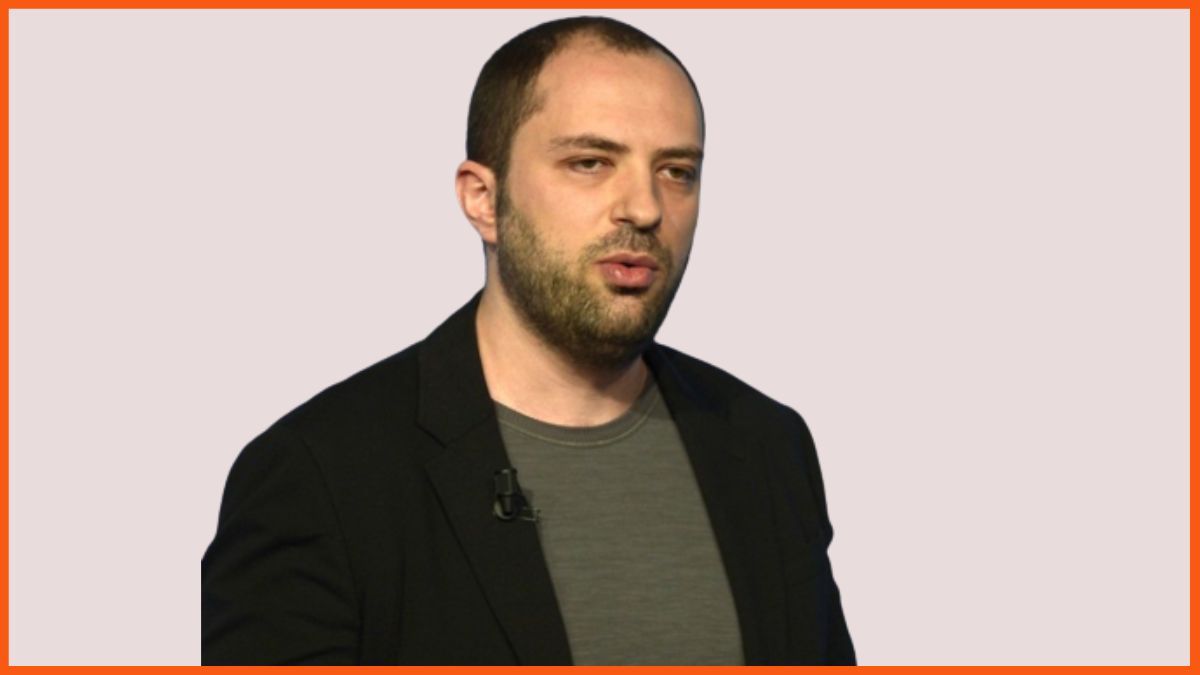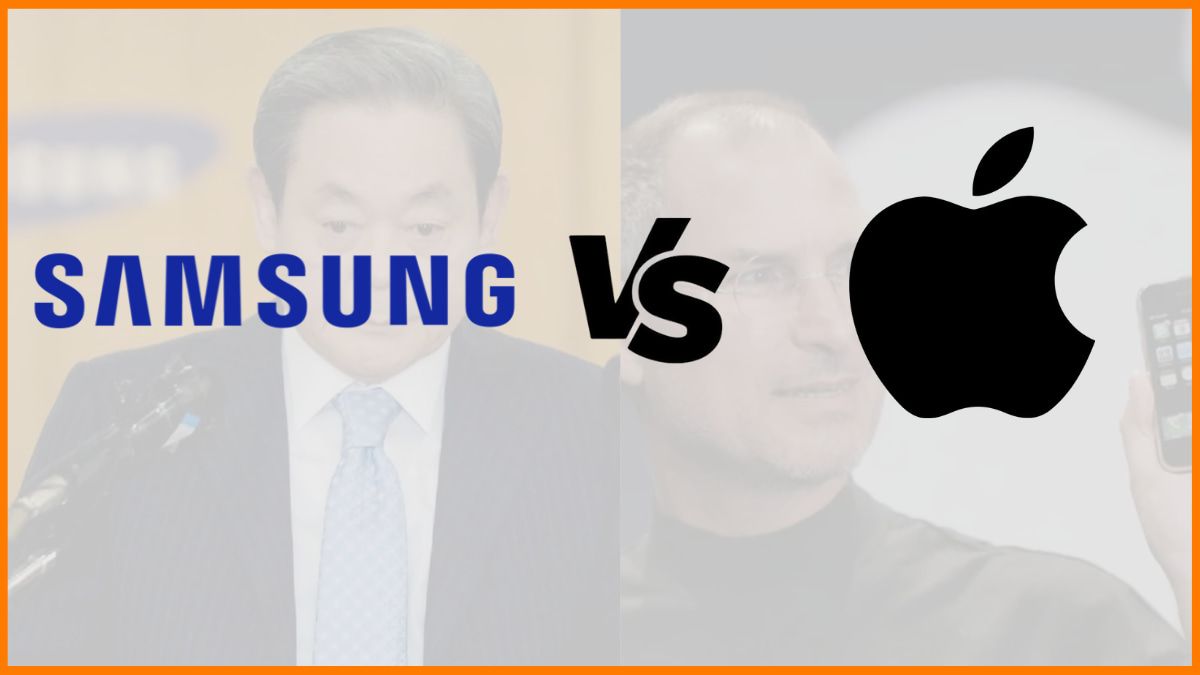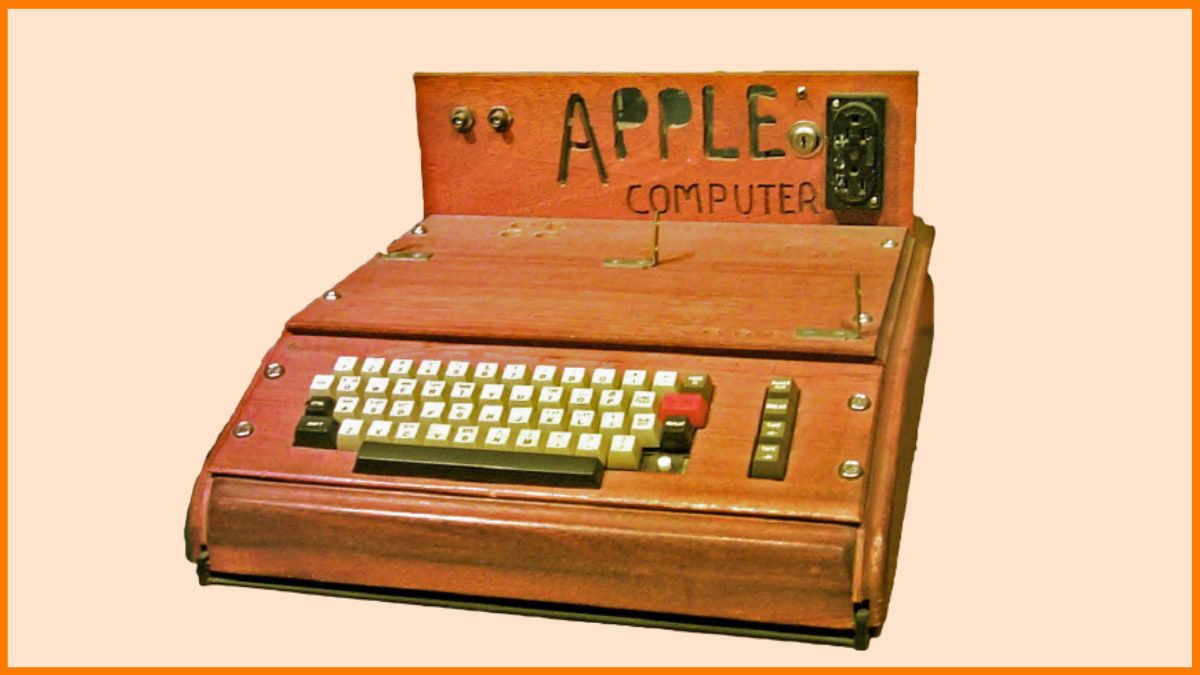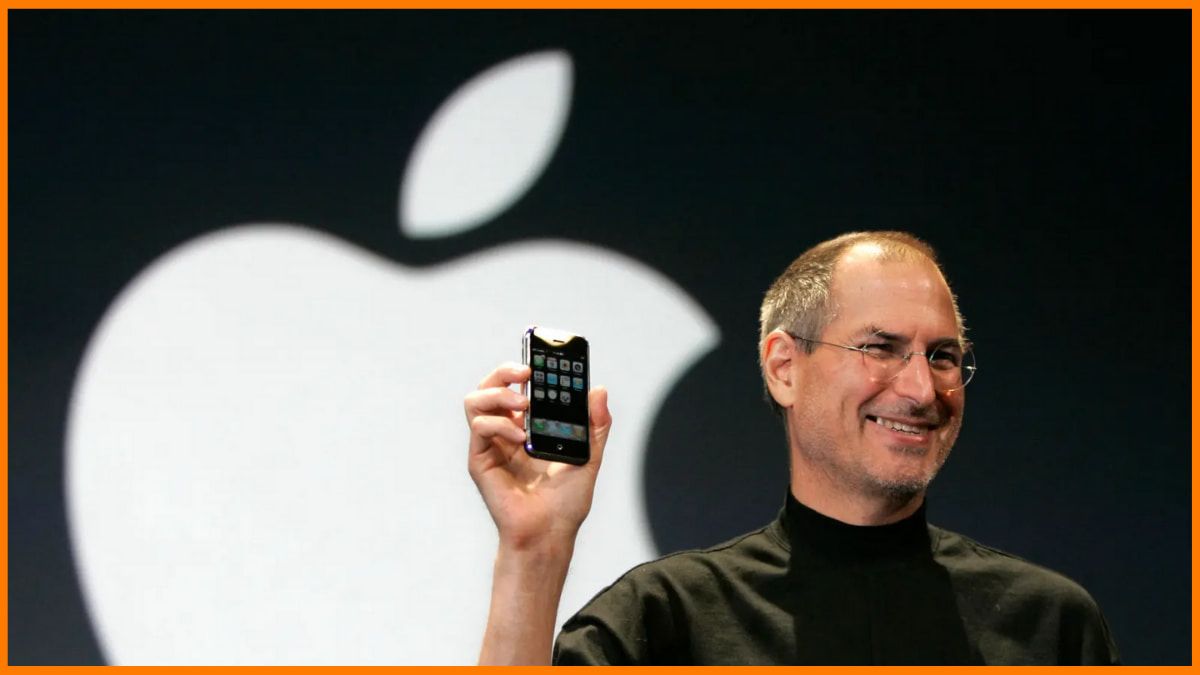Apple is the biggest name in the technological industry. With many amazing products, Apple has very few competitors. Well, the man behind the success and rise of the company is Steve Jobs.
He is regarded as one of the greatest entrepreneurs of all time and is an inspiration for many. Under his leadership, the company started to produce revolutionary technologies, some of the most famous products are the iPhone and iPad. Due to the success of the company, the products are a symbol of economical status in the present generation.
Now the question arises who made Apple the brand it is known for today? And how did Steve Jobs become successful? Steve Jobs entrepreneur story is a powerful example of innovation, resilience, and transforming the tech industry through vision and creativity. Read on to know more about the success story of Steve Jobs.
Steve Jobs Information
| Name | Steve Jobs |
|---|---|
| Born | 24 February 1955, San Francisco, California, United States |
| Died | 5 October 2011, Palo Alto, California, United States |
| Citizenship | American |
| Education | Reed College, Portland, Oregon |
| Title | Co-founder, Chairman, and CEO of Apple Inc. |
| Occupation | Entrepreneur, Industrial designer, Investor, Media proprietor |
| Board of member | The Walt Disney Company, Apple Inc. |
| Net Worth | $10 billion (2011) |
Who is Steve Jobs?
Steve Jobs – Early Days
Steve Jobs – How Did He Start Apple
Steve Jobs – Founding NeXT, Returning to Apple, and Pixar
Steve Jobs – Philanthropy
Steve Jobs – Quotes
Who is Steve Jobs?
Steve Jobs was an American inventor and entrepreneur who was the co-founder, chief executive, and chairman of Apple computers which became the biggest name in the technology sector.
The company’s product has dictated the evolution of modern technology. Steve was born in 1995 to two University of Wisconsin graduate students who gave him up for adoption.
Since his childhood, Steve was smart but directionless. He had dropped out of college and started off experimenting with different sectors before co-founding Apple with Steve Wozniak in 1976. After that, Jobs left the company in 1985 and launched Pixar Animation Studios. Later on, after a decade, Jobs returned to the company.
Steve Jobs Success Story
Steve Jobs – Early Days
Steve was born on February 24, 1955, in San Francisco, California. He lived in Mountain View, California, this place was later renamed the Silicon Valley. During his childhood, Jobs and his father worked on electronic equipment in the family garage. His father used to demonstrate to him how to take apart and reconstruct electronics. This hobby instilled confidence, tenacity, and mechanical prowess in Jobs. Therefore, the path to excellence started to off from his family’s garage.
Jobs was always an intelligent and innovative thinker since his childhood. However, his youth was struck in the quicksand of formal schooling education. Due to the boredom, he was a prankster during his days in elementary school, and hence, his fourth-grade teacher needed to bribe him to study. He tested so well that the administrators wanted him to skip ahead to high school. However, his parents declined that offer.
Post high school, Steve enrolled at Reed College in Portland, Oregon. There too, he was frustrated and dropped out of college and spent the next year and a half dropping in on creative classes at the school. He had developed a love of typography during his struggling days.
In 1974, Jobs took over the job of a video game designer with Atari. A few months later, he left the company and travelled to India.

Steve Jobs – How Did He Start Apple
During the days when Jobs was enrolled at Homestead High School, he was introduced to Steve Wozniak. Later on, the duo co-founded Apple. During an interview, Wozniak has stated that their partnership was successful because of their love for electronics.
They used to work for hours with digital chips, and very few had an idea about chips during that time. Although Wozniak had designed many computers before Jobs did, both of them shared a common interest that fueled their journey to success.

The start of their entrepreneurial venture was in 1976 when Jobs and Wozniak started a company named Apple Computer. The first headquarters of the company was at Jobs’s family garage. Initially, they funded their entrepreneurial venture by Jobs selling his beloved bus and Wozniak selling his scientific calculator.
Later on, the duo is credited with revolutionizing the computer industry with their company by democratizing the technology and making machines smaller, cheaper, and more accessible to everyday customers.
Wozniak had conceived of a series of user-friendly personal computers, and with Jobs in charge of the marketing sector of the company, they marketed the computer for $666.66 each. The Apple I earned the venture around $774,000! After three years of Apple’s second model, the Apple II, the company’s sales increased by 700 percent to $139 million.
In 1980, the product became a publicly-traded company and comprised a value of $1.2 billion by the end of the first day of trading. Alter on, Jobs asked the marketing expert John Sculley of Pepsi-Cola to accept the role of CEO of Apple. However, the next several products of the company experienced negative feedback due to the flaws in the products. Hence, IBM surpassed Apple in sales and Apple had to compete with a PC dominated world by IBM.
The year 1984 experienced the release of Macintosh, it was both romantic and creative. However, despite positive sales and performance superior to IBM’s PCs, the product was still not compatible with IBM. Later on, Jobs was pushed into a marginalized position in the company and left the company in 1985.

Steve Jobs – Founding NeXT, Returning to Apple, and Pixar
Post his tenure at Apple, Jobs began a new hardware and software enterprise named NeXT. The brand floundered in its attempt to sell its operating system to the public and later on, was taken over by Apple in 1996 for $429 million.
In 1997, Jobs returned to Apple and came back with a new management team. The team under Steve altered stock options and self-imposed an annual salary of $1 per year.
Under Jobs, the company came back on track and his products like iMac gained positive reviews from the customers. In the upcoming years, Apple introduced many more revolutionary products like Macbook Air, iPod, and iPhone. The competitors struggled to produce similar technologies and this became the reason for the success of Apple and Steve Jobs. Later on, Apple became the face of technology.
In 1986, Steve purchased an animation company from George Lucas. This brand was called Pixar Animation Studios. Jobs had invested $50 million of his own money into the company. The studio became popular in the industry by producing many iconic movies like Toy Story, Finding Nemo, and The Incredibles. Pixar’s movies earned the company a whopping $4 billion. In 2006, it merged with Disney and in this case, Jobs was the largest shareholder of the acquisition. In 2024, Steve Jobs’ net worth is estimated to be $7 billion, but he could have been significantly wealthier if he had held onto his Apple shares.
Steve Jobs – Philanthropy
Unlike many billionaires, Steve Jobs was not widely known for philanthropy and faced criticism for not donating as much as his peers. He was a very private person, which led some to believe he may have made anonymous donations over the years. Here are some of the key philanthropic contributions made by Steve Jobs:
- After leaving Apple, Jobs created the Stephen P. Jobs Foundation, initially focused on vegetarianism and nutrition, but later shifted to social entrepreneurship.
- When Jobs returned to Apple in 1987, he cut Apple’s philanthropic programs to reduce costs. This decision contributed to Apple’s image as one of the least charitable tech companies.
- Later in his life, he donated $50 million to Stanford Hospital and gave an undisclosed amount toward AIDS research.
- Jobs is mostly remembered and admired for his innovative business achievements, rather than for philanthropy.
Pichai”, the engineer and now the CEO of both Alphabet as well as Google LLC.
Sundar Pichai is known to be an Indian one-man army in the market of business
and entrepreneurship. Read this article to know about the story of Sund…

Steve Jobs – Quotes
Steve Jobs, Apple’s co-founder, shared many powerful quotes that can inspire you as you chase your own business dreams.
- Innovation distinguishes between a leader and a follower.
- Be a yardstick of quality. Some people aren’t used to an environment where excellence is expected.
- You can’t connect the dots looking forward; you can only connect them looking backwards. So you have to trust that the dots will somehow connect in your future.
- Don’t let the noise of others’ opinions drown out your own inner voice.
- Stay hungry. Stay foolish.
- Your time is limited, so don’t waste it living someone else’s life.
- I’m convinced that about half of what separates the successful entrepreneurs from the non-successful ones is pure perseverance.
- You can’t just ask customers what they want and then try to give that to them. By the time you get it built, they’ll want something new.
Conclusion
Steve Jobs is regarded as a marketing genius by many as he made Apple products a status symbol for the next generation. Due to his strong personality and intelligence, Steve Jobs will be remembered as the most iconic entrepreneur ever!
FAQ
Who is Steve Jobs?
Steve Jobs is an American entrepreneur and co-founder of Apple. He is known as the man behind the success of Apple.
How did Steve Jobs start Apple?
Steve Jobs with Steve Wozniak started Apple in his parent’s garage. Steve Wozniak sold his scientific calculator and Steve Jobs sold his Volkswagen bus to fund the business.
Is Steve Jobs an entrepreneur?
Yes, Steve Jobs is an entrepreneur who co-founded Apple with Steve Wozniak.
Who is founder of Apple?
Steve Jobs and Steve Wozniak started Apple in 1976 with a capital of $1350.
Where did Steve Jobs grow up?
Steven Paul Jobs grew up in Cupertino, California. It is now known as Silicon Valley.
What made Steve Jobs successful?
Steven Paul Jobs was successful because of his strong vision, creativity, and focus on design and user experience. He had a unique ability to understand what people wanted before they knew it themselves. Jobs also pushed for perfection, inspired his teams, and made bold decisions that changed technology, from the Mac to the iPhone. His passion and persistence helped build Apple into one of the world’s most valuable companies.
How long did it take Steve Jobs to become successful?
Steve Jobs became successful in about 5 years after starting Apple in 1976. By 1980, Apple went public and made him a millionaire. However, his real global success came later with products like the iMac (1998), iPod (2001), and iPhone (2007) after returning to Apple in 1997. His journey had ups and downs, but his major success took about 20–30 years of vision and hard work.
What was Steve Jobs net worth?
Steve jobs net worth was $10 billion in 2011.


































































